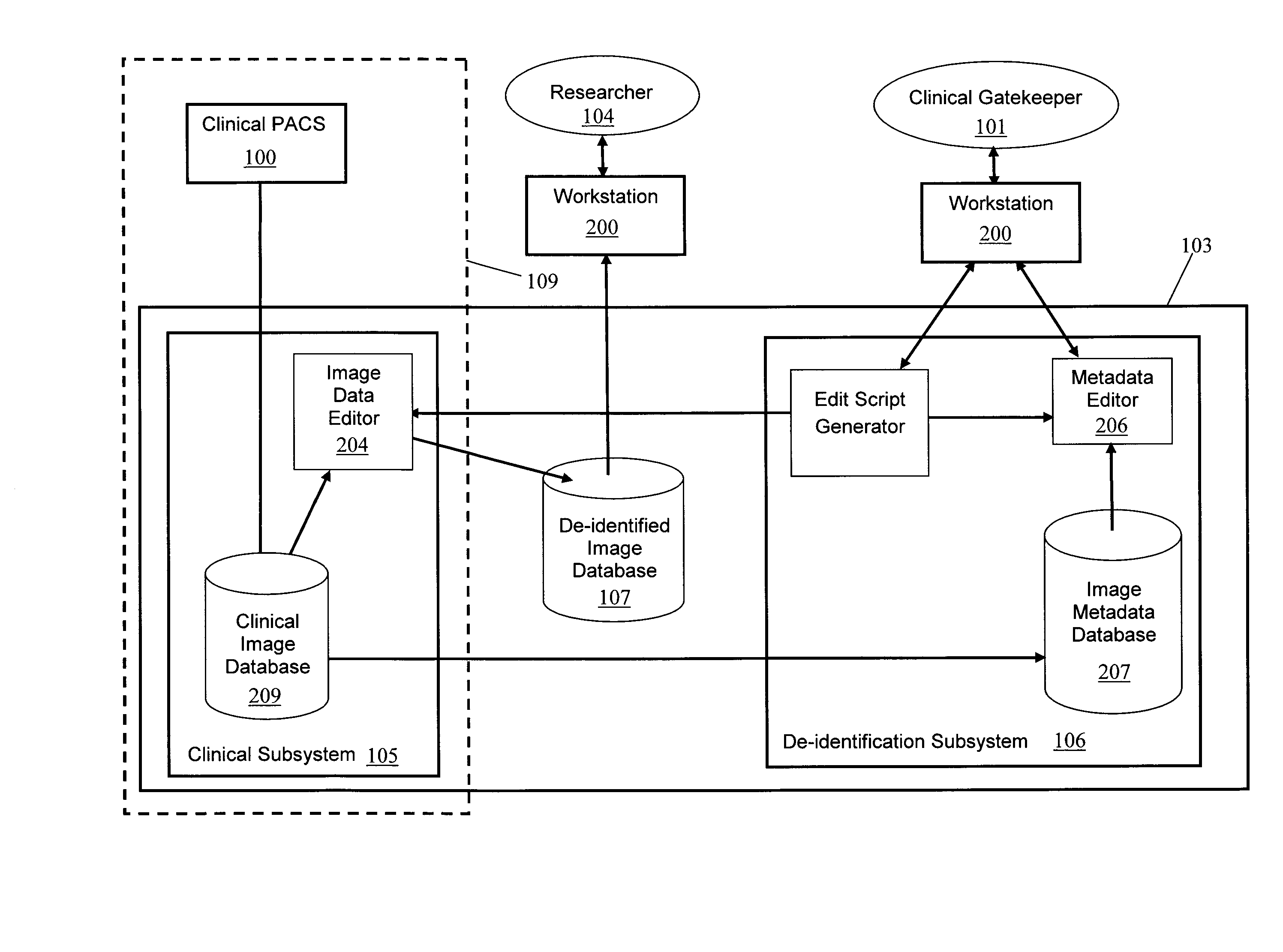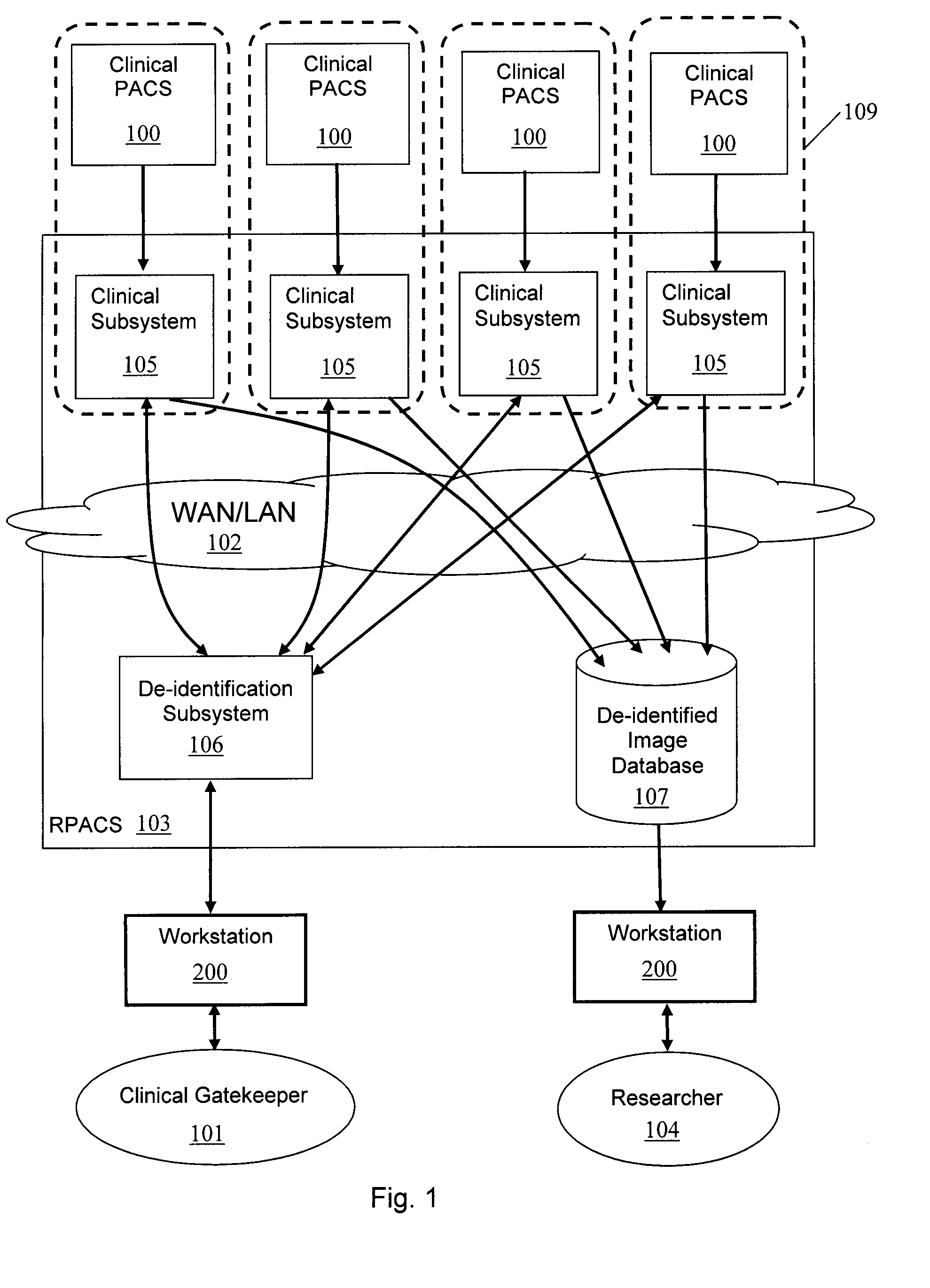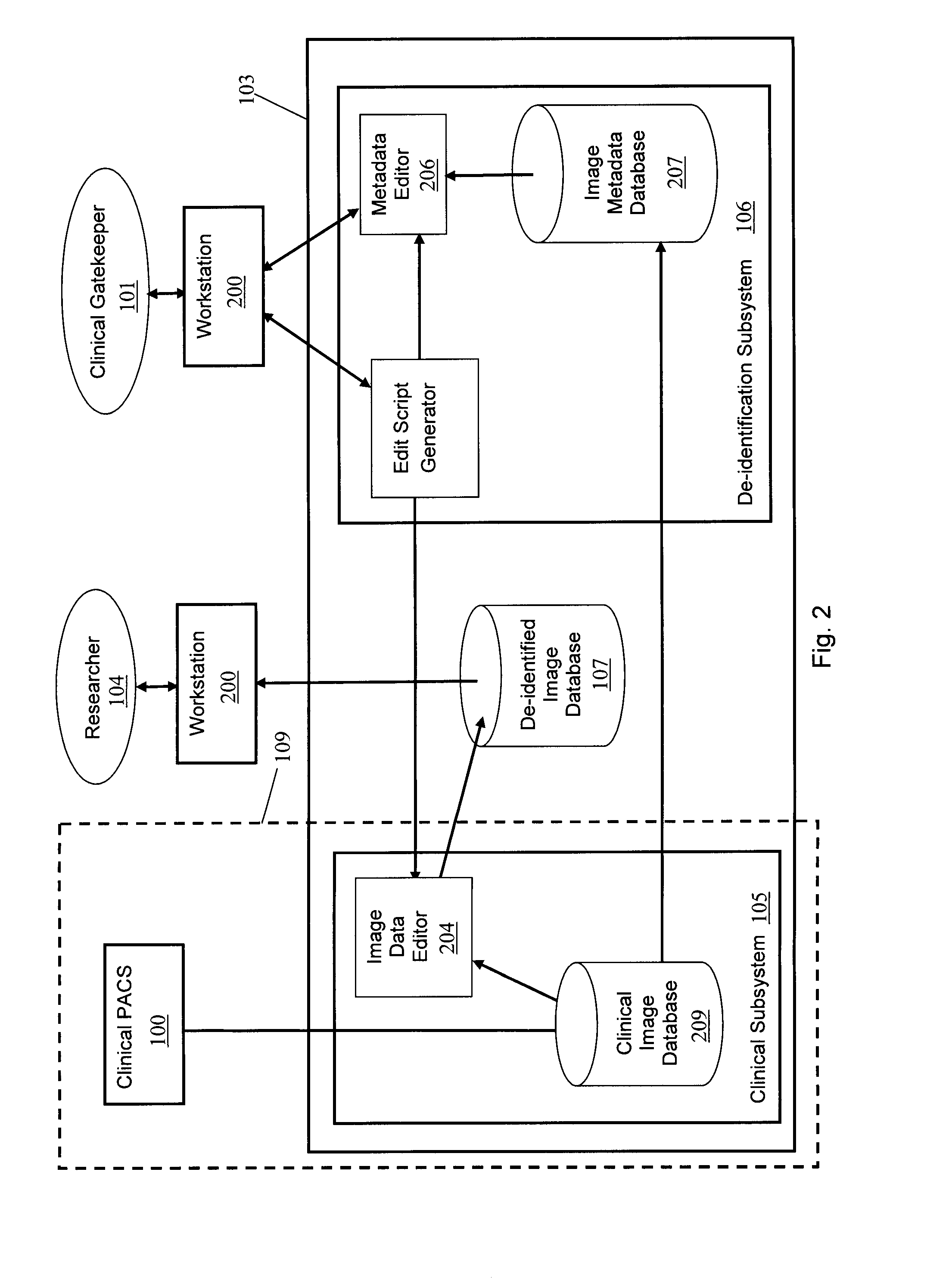Research picture archiving communications system
a communication system and research picture technology, applied in the field of research picture archiving communications system, medical diagnostic imaging system, can solve the problems of difficult to transport pacs data out of the clinical arena, de-identifying the data set, costly and error-pron
- Summary
- Abstract
- Description
- Claims
- Application Information
AI Technical Summary
Benefits of technology
Problems solved by technology
Method used
Image
Examples
Embodiment Construction
[0019]The RPACS is designed to be used in all contexts that involve the storage, cataloguing, manipulation, processing and distribution of medical images, metadata and ancillary data. Examples of such contexts are research teams that:[0020]conduct research projects to produce novel image processing and data manipulation tools, such as new image segmentation algorithms;[0021]are developing novel imaging modalities, such as magnetic resonance imaging enhancements;[0022]are developing new imaging protocols, such as specific protocols for surgical planning;[0023]are developing new imaging agents, such as new contrast agents; and[0024]are conducting clinical trials on new pharmaceuticals and are using medical imaging with biomarkers as endpoints.
[0025]The invention is a Research PACS (“RPACS”), which is a hardware and software system including a server machine, and one or more client machines. Data can be input into RPACS, for example, by (i) sending DICOM formatted data using DICOM netw...
PUM
 Login to View More
Login to View More Abstract
Description
Claims
Application Information
 Login to View More
Login to View More - R&D
- Intellectual Property
- Life Sciences
- Materials
- Tech Scout
- Unparalleled Data Quality
- Higher Quality Content
- 60% Fewer Hallucinations
Browse by: Latest US Patents, China's latest patents, Technical Efficacy Thesaurus, Application Domain, Technology Topic, Popular Technical Reports.
© 2025 PatSnap. All rights reserved.Legal|Privacy policy|Modern Slavery Act Transparency Statement|Sitemap|About US| Contact US: help@patsnap.com



